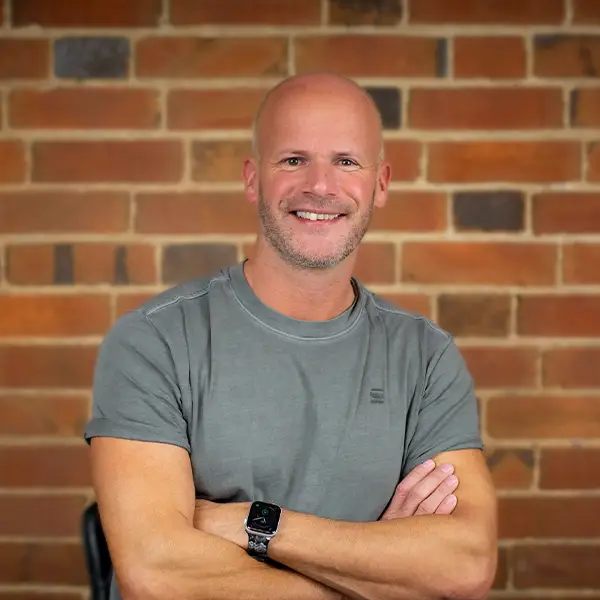Once upon a time, before I started my career in social media, I had some temporary work and did a bit of painting and decorating. I was doing a job for a carpenter who specialised in fixing up sash windows. While painting away one day, I asked him if he had much work lined up. He did, he was fully booked for the next few months. I asked him why he was so busy, and he told me “Clever marketing, mate!”
It turned out that he didn’t really do anything that clever — he simply posted flyers through the doors of houses that had tatty sash windows.
“The good thing is, I don’t waste my time posting flyers through doors of houses that have UPVC windows,” he said.
I asked him what his strike rate was.
“I reckon for every 100 flyers I post I get two calls.” he said.
I found this fascinating.
Fast-forward fifteen years and I’m doing exactly the same type of marketing as that carpenter, but now on social media – trying to post ads to the right audience and trying to achieve a conversion rate similar to the carpenter. (His conversions rate was 2% by the way).
Understanding the important numbers
Why did I tell you that story? Well, understanding some key numbers can help you work out how much you should be spending on your Facebook ads.
Conversion Rate
The carpenter got two calls for every 100 leaflets posted. Therefore, his conversion rate was 2%. In the digital world, we can apply the same calculation. What percentage of your website visitors turn into customers? We’ll use an e-commerce business as an example. Typically, e-commerce businesses, depending what they are selling and to whom, achieve a conversion rate between 1-3%. Let’s assume our e-commerce biz is achieving a conversion rate of 2%.
1000 website visitors = 20 sales
If your conversion rate is low, maybe your website user experience needs improving? But that’s a subject for another blog.
Earnings per Lead (EPL)
The next important number to work out is how much a customer typically spends. This is quite easy to work out – a quick calculation is to add up your last 100 sales and divide the total by 100. Let’s say our e-commerce business has an average spend of £100.
Now we have our conversion rate (2%) and average spend (£100), we can work out our EPL.
£100 x 2% = £2
This means that every customer that visits our website is worth £2. Got that? You might need a moment to get your head around the concept, but it’s worth taking the time to understand. For this example, I’m keeping it quite simple. I’m aware many businesses may have different types of conversions and complicated revenue streams but for the purpose of this blog I’ll keep it basic.
Cost per Lead (CPL)
Our CPL is how much it costs to, erm… get a lead. In this case, how much it costs to get a visitor to the website. With Facebook advertising, we can measure this accurately using the Facebook Pixel. If we are running a campaign that is performing well and reaching the right audience, we might expect to pay 50p for someone to click an ad and visit the website.
If we are paying 50p for someone to click an ad and visit our website, and we know that every visitor is worth £2, we’re laughing.
£500 ad spend = 1000 clicks = 50p CPL
If your CPL is high, then improving the ad creative or testing different audiences may help to lower this cost.
3:1 Rule
It doesn’t take a rocket scientist to work out that our Cost Per Lead needs to be lower than our Earnings Per Lead to make our business work — otherwise we’ll be losing money with every sale we make.
All businesses are different, but all successful ones are careful with the numbers and how much they spend on marketing. A good place to start is the 3:1 rule, profit to expenses. If we spend more than a third of our profit on marketing, then chances are we don’t really have a viable business. Many businesses can spend less than a third on marketing — which equals more profit. Good for them!
An alternative way to calculate your marketing budget is to use 10-20% of your total planned sales. Estimating a sensible marketing budget depends on profit margins and other factors. As mentioned, every business is different, but these are good starting points and broadly come to the same ballpark figure.
How much to spend on Facebook ads?
We can work out how much we need to spend on Facebook ads by working back from what we want to achieve. Let’s say we want to achieve £5k monthly profit for our e-commerce business. Let’s presume that 50% of our costs go on actually making and distributing the thing we sell, so therefore, we actually need to achieve £10k monthly sales to achieve our £5k profit goal.
Using the 3:1 rule we can work out that we are able to afford no more than a third of £5k, so not more than £1675 on marketing to achieve sales of £10k.
Based on the 2% conversion rate we discussed earlier, we can calculate that for every visitor who lands on our site, we will earn £2. We can then work out that we need 5000 visitors to reach our goal of £10k monthly sales.
Finally, it is possible to calculate that we can invest £1650 on advertising to get 5000 visitors which works out at a cost of 33p, or lower, per visitor to achieve our goal of £10k in sales and £5k profit.
£5k revenue = £10k sales / £2 EPL = 5000 visitors needed = 33p CPL
If you got this far, well done. It might take a few reads. I’ve had to read it a few times and I wrote it!
So now you know…
The above is called an attribution model (I didn’t mention it until now because it sounds really boring, but that is essentially what it is). The bad news? It is different for every business. That said, you now have everything you need to know to crunch the numbers and work out what’s the right Facebook advertising spend for your business. Once you’ve got an attribution model that works, you can start fine tuning the results and improve advertising performance.
If you’re interested in seeing if Facebook advertising is right for your business, get in touch. We’re always keen to listen to understand your goals.

